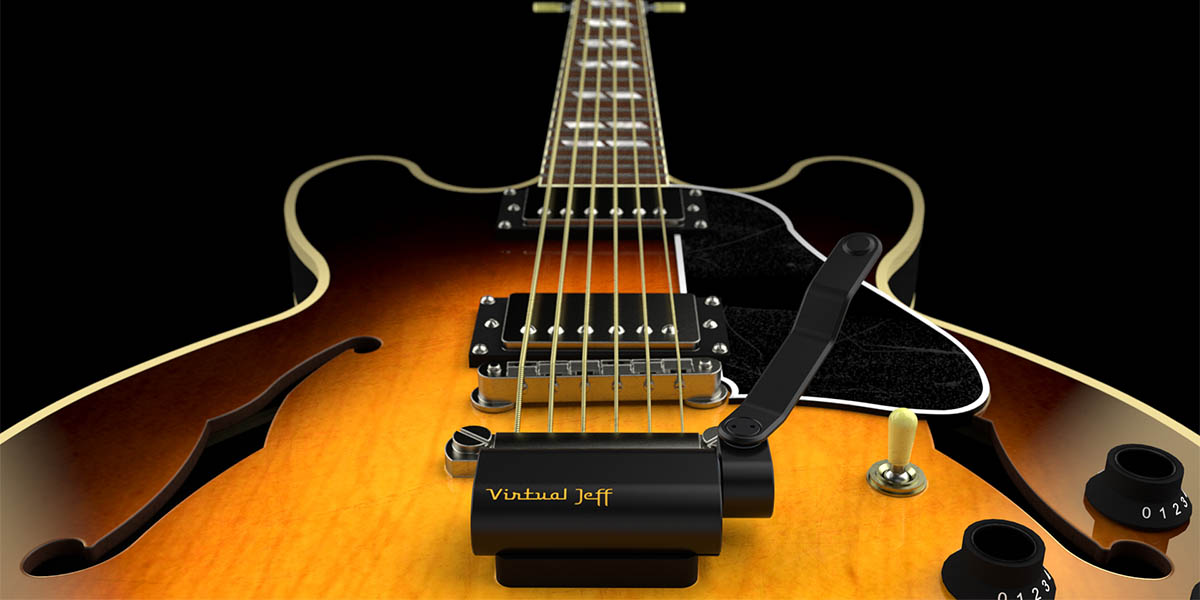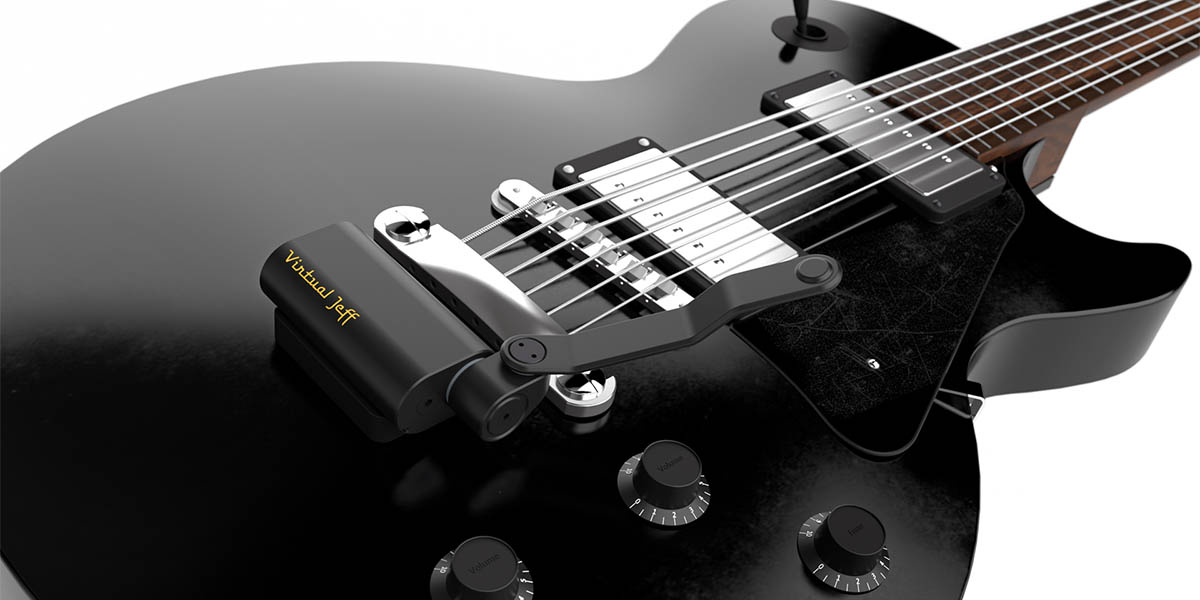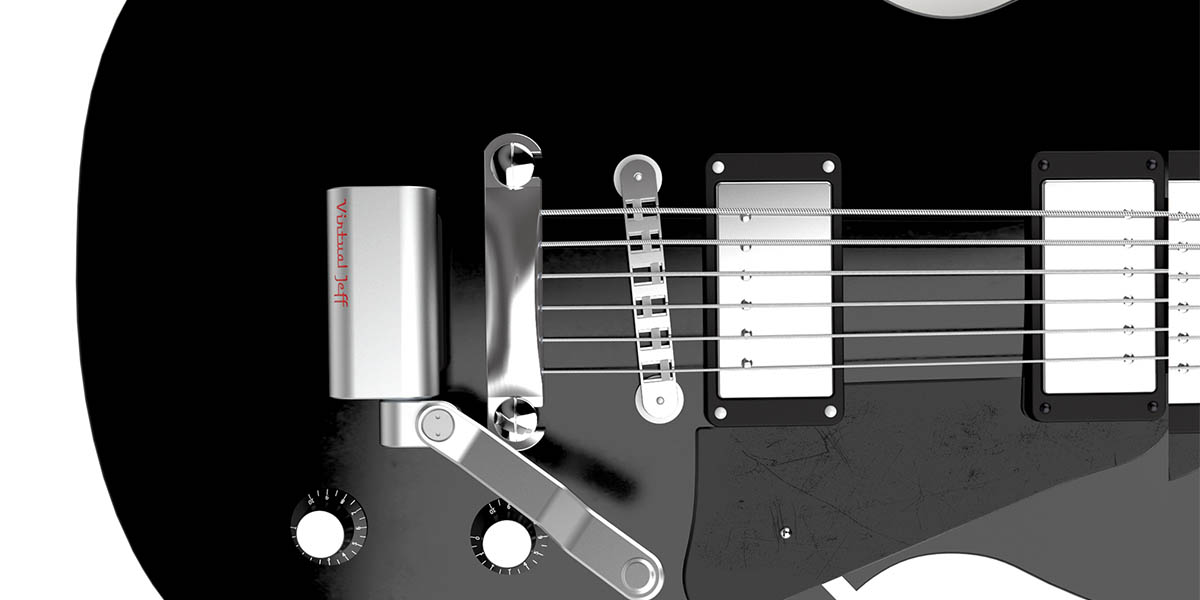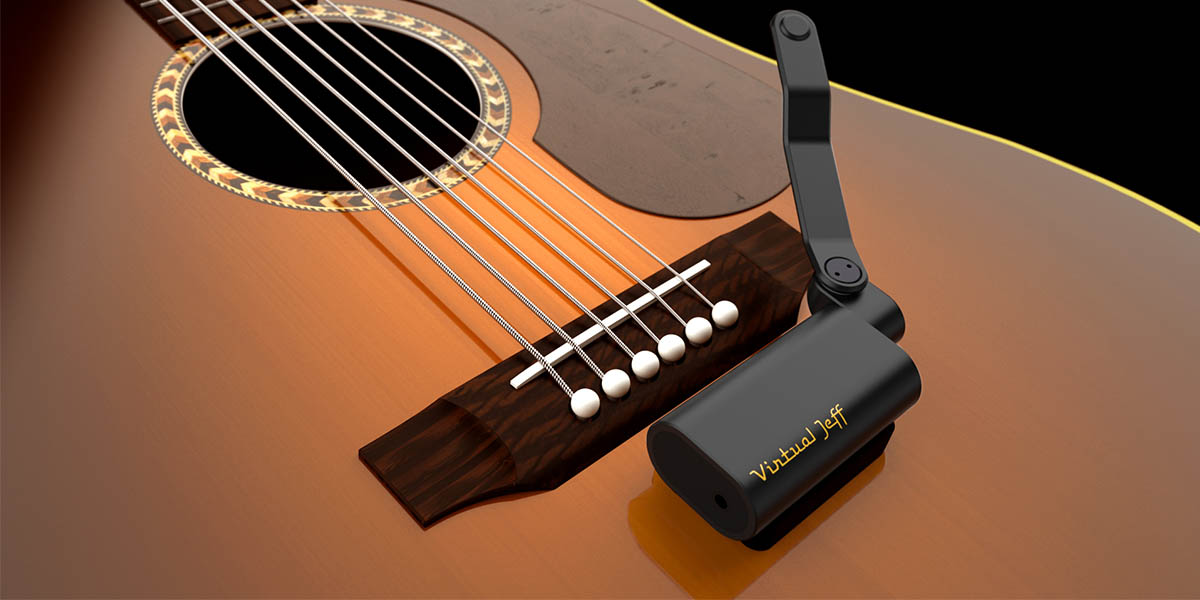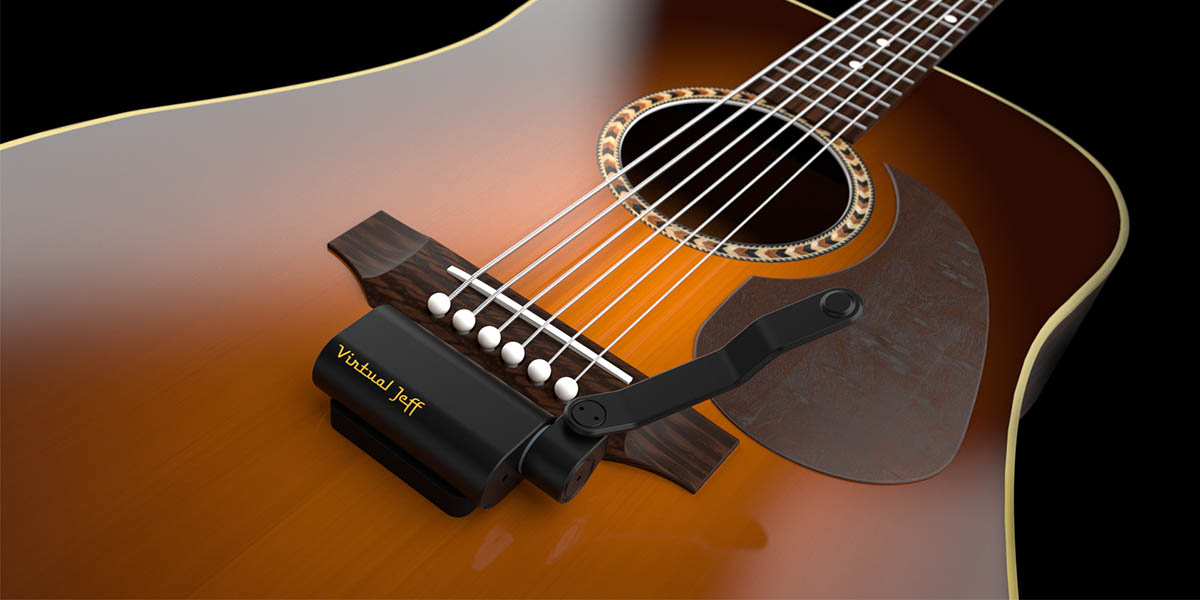Virtual Jeff – Digital Whammy Bar System

-
2015
-
Product
Sport and Lifestyle
Designed By:
Virtual Jeff is the electronic successor to mechanical vibrato systems (a.k.a. ‘whammy bars’) used for expressive pitch effects on guitar. Its unique mechanism uses a sensor tied to a microprocessor for digital pitch control.
This breaks new ground: whammy bars traditionally rely on levers and heavy springs to crudely alter string tension/pitch. Virtual Jeff does it electronically.
Its whammy unit is sleek and tough, with superior ergonomics. Deft mechanical design provides extraordinary precision. Digital processing makes novices sound like pros.
Virtual Jeff imparts no mechanical stress to instruments or strings so it can be easily fitted to electric and acoustic guitars, an exciting new field for whammy use.
